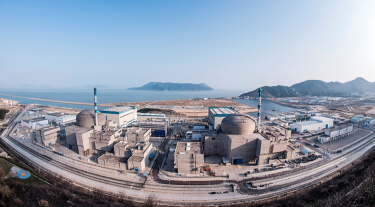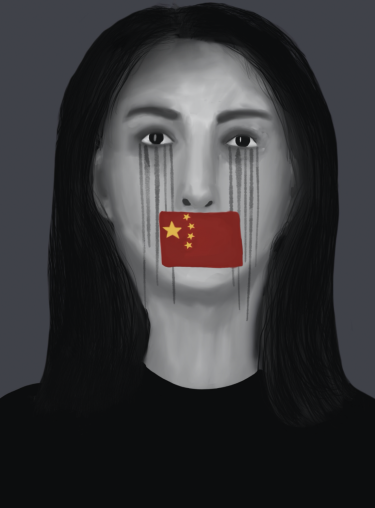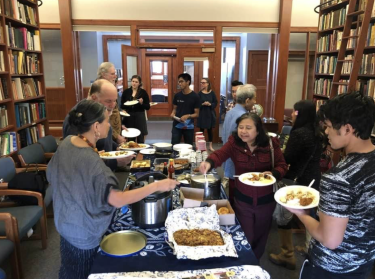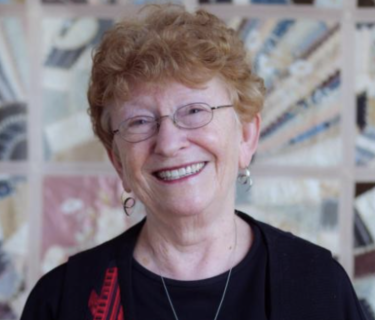
China's Nuclear Belt and Road:
CAS Brief and Upcoming Event
Over the past decade, China has emerged as a major global actor in the financing and construction of energy infrastructures, particularly in Asia. With Beijing’s recent announcement that it plans to discontinue funding and building coal-powered electricity plants beyond China’s borders, nuclear power has received increasing emphasis in China’s energy infrastructure investments abroad. As part of the Xi administration’s ‘Belt & Road Initiative’ China has proposed building as many as 30 new nuclear power plants across Asia, in addition to the 43 reactors already planned for construction within China. Will China’s efforts bring about a new era of nuclear energy expansion around the globe? As part of our initiative on living in and beyond the nuclear age in Asia, we invited Professor M.V. Ramana, Director of the Liu Institute for Global Issues at the University of British Columbia to offer his thoughts on China’s role in the future of nuclear power in Asia. Professor Ramana is one of our speakers for the CAS-hosted workshop on “China’s Nuclear Belt & Road” on the CU Boulder campus, taking place on Friday, April 22nd. The workshop will gather international experts on nuclear technology, security, vulnerability, and safety to discuss the role of China in global issues of nuclear power development. In addition to political and strategic issues, there are significant environmental & climate issues and debates surrounding the question of nuclear power development. These will all be central to the workshop’s presentations and discussion. The workshop is free and open to the public.
~ Tim Oakes, Professor of Geography, CU Boulder
Even China Cannot Rescue Nuclear Power from its Woes
By MV Ramana
What happens when an unstoppable force meets an immovable object? This well-known Irresistible Force paradox comes to mind when considering the role that China could play in shaping the future of nuclear energy. Over the last quarter century or more, China has repeatedly demonstrated the ability to build infrastructure within budget and on schedule. But can it do the same for nuclear power plants, thereby rescuing that technology from declining gently into oblivion?
Before answering that question, I should first explain why I say nuclear power is declining, and explain why that is happening. The impression the news media offers is one of sunny optimism, with glowing accounts of innovative and sophisticated new nuclear reactor designs, often offered up as our only hope for solving the climate crisis. This is misleading.
Nuclear power is a technology whose golden age is long over. Commissioning of new nuclear power plants peaked in 1984-85, and new nuclear power additions in subsequent years have been a mere fraction of that peak. In the first two decades of this century, 95 reactors were started up around the world while 98 reactors were closed down.
All of these have resulted in a decline in nuclear energy’s role in providing power. Measured in terms of the share of global electricity generation, nuclear power has come down from a maximum of 17.5 percent in 1996 to barely above 10 percent in 2020. In contrast, the fraction of global electricity generated by what are called modern renewables, namely solar, wind, geothermal, and biomass-based energy, has consistently risen, from 1.2 percent in 1997 to 10.7 percent in 2020.
This decline is a result of nuclear power’s inability to compete economically, in turn because of the high and rising cost of building nuclear reactors. Nuclear plants also take a long time to build—at least a decade from the start of planning to actually being connected to the electric grid—and they cost a lot to operate. These factors limit how fast nuclear power can grow even if some reactors were to be built.
China’s experience testifies to the stubborn problems of nuclear energy. The country started relatively late on building nuclear power plants, but as with many other elements of infrastructure, the country has emerged as the leader in building nuclear plants. Despite its breakneck pace of construction, nuclear energy contributed just under 5 percent of electricity generated in 2021. But China is also building just about every other source of power too, including the technologies that will be critical to climate mitigation: wind and solar energy. Together, these two sources contributed roughly 250 percent as much electricity as nuclear plants in 2021.
Of missed targets
Chinese officials have periodically laid out impressive targets for all of these technologies. Targets for wind and solar energy capacity have routinely been met, sometimes more quickly than envisioned. This might well be the case for even the ambitious target of 1,200 gigawatts of solar and wind power by 2030, as laid out in the Nationally Determined Contribution report from October 2021.
Nuclear targets, on the other hand, have been declining in ambition, and these are no longer being met. The most recent target is from March 2022, when the National Energy Administration (NEA) set the target of increasing installed nuclear power capacity to 70 gigawatts by 2025. Considering that the current capacity is only around 51 gigawatts, that might seem ambitious. But a target of 70 GW was first suggested for 2020 by the China Nuclear Energy Association in 2010; around the same time period, even targets as large as 114 GW by 2020 were reported.
Since then, and especially after multiple reactors melted down in Fukushima in neighbouring Japan, China’s government has become more cautious about nuclear power, and rightly so. The target in the 13th five year plan was only 58 gigawatts by 2020, and, as of April 2022, China is yet to reach that capacity target. Judging by what is under construction, China will miss the target of 70 gigawatts by 2025 as well.
The systematic missing of targets is not accidental. Nuclear power plants are difficult to build, and China can no more sidestep those hard technical challenges than France or the United States. Many Chinese nuclear plants have been delayed and construction costs have exceeded initial estimates. Take, for example, the twin High Temperature Gas Cooled Reactor units (Shidao Bay 1-1 and 1-2). When construction started in December 2012, the promise was that it would “take 50 months” to build them, and the plant would start generating electricity by the end of 2017. The plant was connected to the grid only in December 2021, roughly twice as long as was projected, and at a cost significantly largerthan other sources.
In addition to high costs, there are other barriers to the expansion of nuclear power within China. Thus far, all nuclear power plants in China are located on the coast. But only a limited number of reactors can be built on existing sites and there are few coastal sites available for new nuclear construction. At the same time, there is real and justified resistance to building nuclear power plants in inland sites, next to rivers and large lakes. There are accident risks and concerns about the high requirements for water to cool nuclear plants. Water from these sources is already in great demand for drinking, agriculture, and other higher priority uses. In the long run, then, geography will limit how much China can expand nuclear energy.
What about China’s role in nuclear power elsewhere?
Nuclear power features prominently in China’s plans for exports of energy technologies under the Belt and Road Initiative. In February 2022, China National Nuclear Corporation signed an agreement to build a nuclear plant in Argentina. This marks China’s first export of a nuclear reactor to a country other than Pakistan (with whom China shares a special relationship that also extends to sharing nuclear weapons and related military technology).
But a swallow does not a summer make. Many other nuclear reactor vendors have won one or two contracts but have not managed to translate that into future orders. South Korea, which beat out France in 2009 for the contract to build the UAE’s first nuclear power plant, is perhaps the best example. Since that “victory”, South Korea has not won a single reactor export contract.
A different example is that of Russia, which has dominated the nuclear export market since 2009. Following its attack on Ukraine and resultant sanctions, many of Russia’s contracts, including in Finland and in Hungary, are likely to be cancelled if they have not already been. Russia’s ability to even complete the remaining contracts is also being questioned.
The future of the Argentina project is also uncertain. Historically, Argentina’s commitment to new nuclear construction has an on-off character. In 2007, for example, the country signed an agreement with Canada and China to construct a CANDU reactor—which never happened. In 2015, Argentina signed an agreement with China to build two nuclear plants. That, too, never happened. The current agreement might not come to fruition because the Argentinian government is dealing with high debt levels and is pushing China to fully finance construction of this plant. Notwithstanding China’s deep pockets, there is a limit to how many multi-billion dollar nuclear plants it can finance—on top of all the other Belt and Road construction projects it is involved in.
At a more basic level, all countries have to contend with the uneconomical nature of nuclear power plants, whether it is Argentina or it is any of the countries that had planned to import reactors from Russia (for example, Bangladesh). If countries with decades of experience with nuclear power cannot make that technology competitive, the odds that newcomers will be able to do so are slim at best.
Putting it all together
Nuclear power in China has grown dramatically in the last decade or more, in large part because of high level political decisions to promote the technology even if it was not really technically or economically justified. This rapid expansion and the ambitious targets announced by the Chinese nuclear establishment, both for domestic and foreign construction, have led to the expectation that China might give the nuclear industry a new lease on life.
These expectations are at odds with how the energy sector is changing, especially due to rapid reductions in the costs of renewable energy technologies. Photovoltaic panels, in particular, have become dramatically cheaper, partly because of China’s role in manufacturing these. This is why the International Energy Agency dubbed solar energy the “new king of electricity” in 2020. In contrast, nuclear power costs have been increasing. These trends essentially ensure that nuclear capacity will continue to decline. China’s unstoppable capacity for construction might shake the nuclear world, but it is unlikely to move. However, each new reactor that is built will result in additional risks and burdens, especially that of accidents leading to widespread radioactive contamination, and dealing with radioactive nuclear waste streams that remain hazardous for hundreds of thousands of years.
--
M.V. Ramana is the Simons Chair in Disarmament, Global and Human Security and Director of the Liu Institute for Global Issues at the School of Public Policy and Global Affairs, University of British Columbia, Vancouver, Canada, and the author of The Power Of Promise: Examining Nuclear Energy In India.
If you are interested in further exploring this topic, attend the China's Nuclear Belt & Road workshop April 22-23, details below.

China’s Nuclear Belt & Road
Socio-technical perspectives on China’s export nuclear infrastructures
In-person workshop, free and open to the public
Friday April 22nd
9:30am - 4:30pm
Venue: Center for British & Irish Studies, Norlin Library, CU Boulder Campus
Saturday April 23rd
10am - 11:30am
Venue: Flatirons Room, Center for Community, CU Boulder Campus
Center for Asian Studies 2022 Symposium
Intermountain Asia and DEI:
Asian Studies in Colorado and Beyond
CAS’s 2022 Annual Symposium will draw attention to the myriad connections between our corner of the world and Asia. We aim to better connect with our fellow Asianists nearby, and to cultivate a vision of Asian Studies that does not limit “Asia” to a distant place, or an object of inquiry far removed from our everyday lives here in Colorado and the Rocky Mountain region more broadly. Former Association for Asian Studies President Christine Yano has called for Asian Studies to take a more global perspective, emphasizing transnational circuits and dynamic encounters, focusing on mobilities and interactions across oceans and borders. Asia cannot be artificially separated from the rest of the world, including the United States. We aim for this symposium to promote discussions of linkages between the US and Asian societies, and we hope that examining the ways Asian societies and Asian diaspora communities are grappling with issues of diversity and inequalities can also help us to think about how we as scholars of Asia can contribute to ongoing efforts to build justice, equality, diversity, and inclusion in our communities.
This public-facing symposium will bring together faculty from several Front Range higher educational institutions to discuss these issues. The symposium will be structured as a series of roundtables during which the presenters will share their perspectives and experiences, and audience members will have a chance to ask questions or make comments. CAS looks forward to bringing the study of Asia, Asian America, and transnational Asia into dialogue.
~ Rachel Rinaldo, Director, Center for Asian Studies

Center for Asian Studies 2022 Symposium
Intermountain Asia and DEI: Asian Studies in Colorado and Beyond
British and Irish Studies Room, Norlin Library 5th Floor (CBIS)
Friday, April 29, 2022
Noon to 4:30 pm
Introductory remarks from John-Michael Rivera, Associate Dean for Arts and Humanities
This symposium will be structured around 3 inter-locking roundtables:
12:15 pm Roundtable 1 - Inter-Asian Connections, will ask participants to reflect on the importance of teaching about Asia in Colorado and what is gained by examining connections and linkages between Asian societies and Colorado.
Alvin Camba, Korbel School of International Studies, University of Denver
Einor Cervone, Associate Curator of Asian Art, Denver Art Museum
Carole McGranahan, Anthropology, University of Colorado Boulder
Andrea Stanton, Religious Studies, University of Denver
Moderator: Rachel Rinaldo, Sociology and Center for Asian Studies, University of Colorado Boulder
1:30 pm - Roundtable 2, Diversity and Marginalization within and among Asian Societies, will ask participants to reflect on historic and recent struggles over religious, racial/ethnic, sex/gender and other forms of inequality and diversity within and between Asian societies and what can be learned from such struggles.
Lucy Chester, History, University of Colorado Boulder
Joon Kim, Ethnic Studies, Colorado State University
Evelyn Shih, Asian Languages and Civilizations, University of Colorado Boulder
Tenzin Tsepak, Center for Asian Studies, University of Colorado Boulder
Moderator: Keller Kimbrough, Asian Languages and Civilizations, University of Colorado Boulder
2:45 pm - Roundtable 3, Asian Studies in Diversity, Equity and Inclusion Work, will ask participants to reflect on how scholars of Asia can participate in JEDI efforts, in Colorado and elsewhere.
Aun Hasan Ali, Religious Studies, University of Colorado Boulder
Mithi Mukherjee, History, University of Colorado Boulder
Stephanie Santos, Gender, Women, and Sexualities Studies, Metropolitan State University Denver
Moderator: Katherine Alexander, Asian Languages and Civilizations, University of Colorado Boulder
A reception with light refreshments will follow

Spring 2022
Asian Studies Major
Odette Shin
Thesis title: Declining Quality of Life: Korean Beauty Standards
and
Tate Keeney - History Major, Asian Studies Minor
Cameron Feken - Japanese Major, Asian Studies Minor
Fall 2021
Asian Studies Majors
Anne Marie Feller
Rose Marie Gilfillan
Makinna Jean Miller
Amy Yuka Vogenthaler

Student Spotlight: Nori Catalano
Asia has always been a place of interest to me. There is so much rich culture, language, food, history intertwined through so many countries. The diversity and heritage bring beautiful stories, architecture, and art. I am currently a junior majoring in Asian studies and minoring in studio art. Art has always had a place in my life whether it be drawing, sculpture, or digital art and I believe Asian art is so beautiful and intricate. I hope my love for art and Asia come together at some point down the road. Asian studies called to me because it was something that I was truly passionate about. Based on my background as a Chinese adoptee, I found myself drawn to Asia through music and food. I also have a passion for cooking, and hope to connect my love for cooking with my knowledge of Asia in the future. In my few trips to various countries, I truly found my love for Asia. I knew I wanted to pursue this passion of mine in studying Asian studies because there are endless possibilities to learn and expand my knowledge about so many different topics. Asia has so much to offer and it is such a large place that it cannot be defined in one way. Asia is a booming place at the moment through economics, trade, population, and many other aspects. I am excited to be a part of these rapid changes in the coming years and hope the future brings me there.
During the pandemic, we have seen so many accounts of discrimination against Asians. We also see history repeating itself by discriminating against those who are seen as “different” or “dangerous.” The treatment of the Uyghurs in Xinjian is utterly astonishing and horrific. The re-education camps and the exploitation of these people remain silenced continuing the cycle of ethnic cleansing. Although this topic reaches some mainstream media I believe it needs to be talked about more and bring more attention to this genocide. In my research, I came across a moving piece from a survivor named Gulbahar Haitiwaji. I learned her story and knew I wanted to draw her face and show the silencing of the Uyghur ethnic minority. The horrors that this woman faced are unimaginable. She had to be careful not to yawn, whisper, or wipe her mouth, or else she would be accused of praying which was a sign of terrorist behavior. Honestly did not know very much of the details about Uyghurs before doing some research and understanding some background. I wanted to expand my knowledge on this topic and my final project for Asia 4500 was a perfect place to do so. Hearing personal narratives from those who experienced these atrocities gives the reader a better understanding to put yourself in someone else's shoes. Art is a very powerful tool to show emotion and feelings through depictions and personal representations. I hope my artwork stirs some type of emotional reaction in the viewer to bring attention to the situation and the horrible treatment of the Uyghurs. I decided to convey my understanding and learning of the situation in Xinjian through artwork in hopes that it can educate others in the process.


First Indonesian Potluck Since 2019
On Friday, April 1, CAS brought together Indonesians and friends of Indonesia for a potluck and Ramadan eve celebration. It was our first Indonesian potluck since 2019, and there was terrific energy in the room as people reconnected in person. It was attended by CU Boulder faculty, staff, and students as well as community members and many brought home-cooked Indonesian food to share.
Over the last few years, CAS has sought to build Southeast Asian studies, including the study of Indonesia, on the CU Boulder campus. Since the 2018-2019 academic year, CAS has hosted a Fulbright Language Teaching Assistant from Indonesia who teaches Indonesian language classes and organizes this annual potluck as outreach to the Indonesian community. This year's FLTA, Akhmad Taufik, has had a growing number of students in his classes. We will bid farewell to Taufik in May and expect to be joined by a new FLTA in August.
Thanks to everyone who helped make this cultural event possible!

CU Boulder Celebrates Tibetan Losar for First Time
By Tenzin Tsepak
On March 4, 2022, the University of Colorado celebrated Tibetan Losar for the first time on campus. Losar, the Tibetan New Year, is celebrated across the Tibetan plateau and in the Himalayan regions of Nepal, India, and Bhutan. This cultural program was jointly organized by the Center for Asian Studies (CAS), the Tibet Himalaya Initiative, and the Anderson Language and Technology Center with gorshey (Tibetan dance), food from the Boulder-based Little Lama Café, and lots of smiling, laughing students and faculty dancing together.
The event started with the serving of ceremonial sweet rice (dresi)– an auspicious food symbolizing prosperity and good fortune–Tibetan butter tea, chai, and Tibetan cookies (khabsey). CAS Instructor Tenzin Tsepak gave a brief background of Losar and its importance in Tibetan culture. Anthropology Professor Carole McGranahan introduced the Tibet and Himalayan studies program at CU. This was followed by second-semester Tibetan language students, David Kwei and Aidan Euler, who read the Tibetan and English translations of the Sixth Dalai Lama's love songs. Sangay Tashi beautifully emceed the event and melodiously sang a stanza from the Sixth Dalai Lama’s songs.
The dinner along with the ceremonial food and drinks were catered by the newly established Tibetan-owned cafe, Little Lama Cafe at Naropa University. The food menu included a wide variety of cuisines like Tuninisian potato salad, grilled tofu and chicken, red radish pickle, and roasted beets. After the yummy food, Sangay Tashi and Bhumshik Gyal dropped the beat and led the Tibetan gorshey dance party for the next 45 minutes.
This cultural event brought together CU students, faculty, and the Tibetan community to celebrate and learn about Tibetan and Himalayan culture. The event was attended by 30-35 people.
On March 3, 2022, the U.S. Department of State organized the 2022 Virtual Losar Celebration with messages from the US Secretary of State, Anthony J. Blinken, and Under Secretary Uzra Zeya.

Professor Jane Menken Pioneer in Women's Reproductive Rights
An article in A&S Magazine profiles the research and impact that Professor Menken's work has had in Bangladesh. Written by Lisa Marshall, the article linked below is a great overview of Professor Menken's long-term research and advocacy.
Decades-long CU Boulder-led study shows access to family planning shapes lives for generations
On a sweltering July day in 1984, Jane Menken stepped off a plane in the teeming capital city of Dhaka, Bangladesh, boarded a van for a dusty, four-hour journey to the remote villages to the south and embarked on a decades-long quest to answer a question of global importance:
What happens when women gain the ability to control their reproductive destiny?
